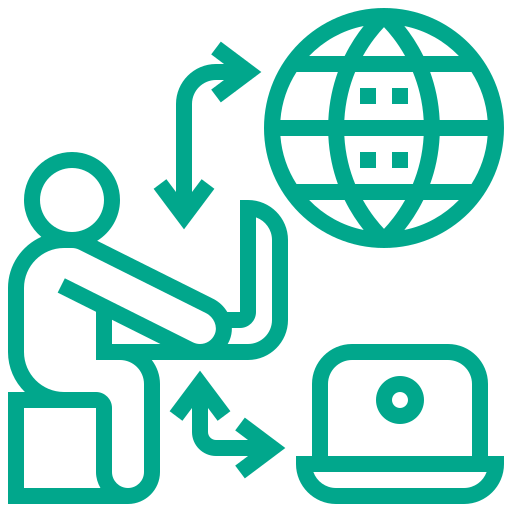Building digital resilience with cyber defence in aviation
How does cyber defence ensure the all-around safety of aviation activities?
Building digital resilience with cyber defence in aviation
How does cyber defence ensure the all-around safety of aviation activities?
The global aviation industry is moving towards innovative technologies.
New technologies like Cloud, 5G, WiFi, satellite communications, and machine learning (ML) make aviation operations exposed to multiple security risks, threatening sensitive data confidentiality and blocking access to critical services.
To prevent the high costs of data breaches, sensitive data from being compromised, and accidents and operational malfunctions, aviation services require a cyber defence policy that can make them resilient against rising attacks and fuel their innovation.
The global aviation industry is moving towards innovative technologies.
New technologies like Cloud, 5G, WiFi, satellite communications, and machine learning (ML) make aviation operations exposed to multiple security risks, threatening sensitive data confidentiality and blocking access to critical services.
To prevent the high costs of data breaches, sensitive data from being compromised, and accidents and operational malfunctions, aviation services require a cyber defence policy that can make them resilient against rising attacks and fuel their innovation.
Cyber defence in aviation—a look at the current threat landscape
In November 2018, the airline Cathay Pacific faced a data breach that leaked the data of over 9 million people.
In January 2020, easyJet airlines faced an attack that compromised over 9 million people as a result of data losses which contained travel data, email addresses, full names, and credit card information.
By 2022, ransomware, phishing, internal threats, and advanced persistent attacks remain some of the most common threats that target the aviation sector.
Cyber defence in aviation—a look at the current threat landscape
In November 2018, the airline Cathay Pacific faced a data breach that leaked the data of over 9 million people.
In January 2020, easyJet airlines faced an attack that compromised over 9 million people as a result of data losses which contained travel data, email addresses, full names, and credit card information.
By 2022, ransomware, phishing, internal threats, and advanced persistent attacks remain some of the most common threats that target the aviation sector.

How does cyber defence protect aviation operations against potential vulnerabilities?
Protects vital communication
Most airline operations rely on effective communication between multiple parties including the pilots, cabin crew, and airline control. Compromising the connectivity—such as disrupting communications between the cabin crew and ground control or jamming the data—could seriously harm the navigation and lead to fatal consequences. A robust strategy for cyber defence in aviation prevents anyone from intercepting the communication channels and the frequencies between these parties.
Secures big data
Airlines host vast databases of information about stakeholders, aircraft, tools, and instruments—all aspects that depend on each other for effective functioning. Unauthorised access to such information leads to exposing vital information like employment contracts and passengers’ sensitive information and risking this information being used for malicious purposes. By protecting this data via measures such as cryptography, organisations can ensure their sensitive data remains protected at all times.
Increases operational control
Airlines are complex ecosystems consisting of multiple hardware and software components. Deploying a bespoke cyber defence solution allows the relevant authorities to keep these components safe through constant monitoring and detection of anomalies, restricting access and mitigating damage. For example, a network segmentation policy helps contain the damage in case of a breach, preventing the attack vector from moving laterally across a network.
How does cyber defence protect aviation operations against potential vulnerabilities?
Protects vital communication
Most airline operations rely on effective communication between multiple parties including the pilots, cabin crew, and airline control. Compromising the connectivity—such as disrupting communications between the cabin crew and ground control or jamming the data—could seriously harm the navigation and lead to fatal consequences. A robust strategy for cyber defence in aviation prevents anyone from intercepting the communication channels and the frequencies between these parties.
Secures big data
Airlines host vast databases of information about stakeholders, aircraft, tools, and instruments—all aspects that depend on each other for effective functioning. Unauthorised access to such information leads to exposing vital information like employment contracts and passengers’ sensitive information and risking this information being used for malicious purposes. By protecting this data via measures such as cryptography, organisations can ensure their sensitive data remains protected at all times.
Increases operational control
Airlines are complex ecosystems consisting of multiple hardware and software components. Deploying a bespoke cyber defence solution allows the relevant authorities to keep these components safe through constant monitoring and detection of anomalies, restricting access and mitigating damage. For example, a network segmentation policy helps contain the damage in case of a breach, preventing the attack vector from moving laterally across a network.
What are the elements of a resilient cyber defence strategy?

Adequate infrastructure for detection and monitoring

Clear definition of the cyber defence responsibilities of all employees

Regular compliance testing to ensure that all systems and devices are safe from a compromise—constantly run tests to check critical security systems

Efficient cyber defence capacity building

Effective compliance with cybersecurity regulations like the International Aviation Trust Framework (ICAO)
What are the elements of a resilient cyber defence strategy?
Adequate infrastructure for detection and monitoring

Clear definition of the cyber defence responsibilities of all employees

Regular compliance testing to ensure that all systems and devices are safe from a compromise—constantly run tests to check critical security systems

Efficient cyber defence capacity building

Effective compliance with cybersecurity regulations like the International Aviation Trust Framework (ICAO)
Get customised cyber defence solutions with VOROR
VOROR caters to organisations across multiple industries, bringing them innovative critical infrastructure cyber defence solutions that meet regulatory requirements of countries across the globe.
Our specialised solutions comprise holistic defence mechanisms that cover NCSC-certified training programmes, cyber defence
consultancy, Zero Trust solutions, and national-grade cryptographic solutions.
Get in touch with our team for unparalleled cyber defence models designed for your organisation.
FAQs
Multiple areas of the aviation industry need security against cyberattacks. Some of the most critical areas include access and departure control systems, fuel gauges, hazardous materials transportation management and flight traffic management systems like primary and secondary radar, and the Global Navigation Satellite System (GNSS).
The aviation industry can adopt the following practices to build a resilient cyber defence model:
- Running cybersecurity audits and security risk assessments
- Carrying out incident management and emergency planning
- Developing new policies
- Fostering a cybersecurity culture through training and awareness
Organisations can deploy policies like multi-factor authentication, network segmentation, and encryption, and ensure privileged access to their digital resources.
Resilient cyber defence in aviation is the key to resilient operations
